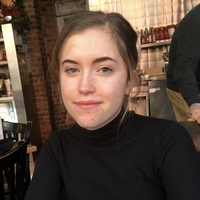Computational Analysis of Bacterial Protein-Inhibitory Interactions
This summer I had the pleasure of working in the Dr. Marisa Kozlowski's Lab Group in the Department of Chemistry alongside graduate student Hanna Roenfanz. The Kozlowski group studies the design of new methods and catalysts for the use in organic synthesis of pharmaceutical and natural products. The group employs several novel computational tools for the discovery and optimization of new reagents and catalysts. I specifically worked on an ongoing research project in designing, understanding and testing a new class of antimicrobials modelled after Honokiol, a compound in Magnolia bark which has been used as a traditional herbal remedy.
The goal of my individual project was to analyze the inhibitory interactions between Honokiol-inspired analogs and bacterial proteins through computational docking. I found that cell-division protein, FtsA, which is a protein that is highly-conserved in Gram-positive bacteria could be a potential molecular target for new antibacterial drugs. Using AutoDock Vina, a computational docking program, I found that Honokiol-inspired analogs act as ATP inhibitors to FtsA and thus disrupt bacterial cell division. After learning about these inhibitory interactions with FtsA, I used these insights to design additional optimal analogs. Initial screening of these analogs demonstrated their potential as FtsA inhibitors and antibacterial agents. Future research should be conducted into inhibitory bioactivity of these newly-designed analogs and to understand the possibility of FtsA as a molecular target for antibacterials.
Through this research project, I learned how to use computational chemistry programs including Autodock Tool and PyMOL and developed basic computer programming skills. Through this experience, I have learned how chemists and microbiologists use computer simulations and visualization techniques to understand how small ligands interact with protein molecules and to design new drugs. While working on this project, I have become a more well-rounded chemistry student developing computational skills that supplement the knowledge I have gained in the classroom and laboratory. I was challenged to integrate the knowledge that I have learned in my biology, chemistry and statistics classes into one project.
This past summer, I’ve become increasingly interested in biochemistry, organic chemistry, microbiology, and pharmacology. I am excited to continue coursework in these disciplines throughout the rest of my undergraduate career and beyond. I have also gained more confidence that I can pursue a career as a physician-scientist and that I will be able to follow both my passion for chemistry and medicine.

Comments
Zoom Password and ID
Below is my Zoom ID and Password. Feel free to join from 5-6:30 pm tomorrow and I would be happy to walk through my poster with you.
Meeting ID: 925 6477 8849 Passcode: 4ucPKx
Zoom Password and ID
Below is my Zoom ID and Password. Feel free to join from 5-6:30 pm tomorrow and I would be happy to walk through my poster with you.
Meeting ID: 925 6477 8849 Passcode: 4ucPKx
Interesting!
This is an interesting project! I am curious about where this research is headed in the future and how well the computational docking program you used replaced an in person traditional lab experience?
Very interesting!
Hi,
This research is very interesting; I'm curious, perhaps I missed it but since you've established that the analogs you've developed compete with ATP for binding to a critical bacterial protein, have you investigated in any way the drug candidate's specificity for this protein? Might it bind to ATP-binding pockets of other bacterial proteins (for that matter, human proteins)? Or is this unlikely given the specificity of binding here.